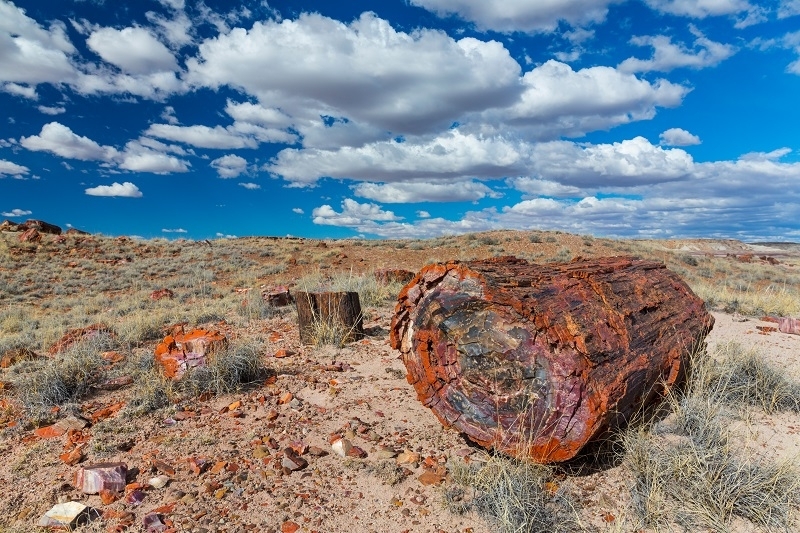A Petrifying Look at Fossilised Trees
Published: 21/06/21 By: Mike Bekin
Here at EcoChoice, we love to deliver sustainably sourced durable timbers to exterior projects such as decking and cladding. But we are also just as passionate about anything to do with trees. So today, we wanted to take you on a journey to a lesser-known part of the tree-related world.
Join us as we take a look at petrified wood and where you can observe the results of this wondrous process.
What is petrified wood?
In short, “petrified wood” is wood that has turned to stone! We know that doesn’t make too much sense, so allow us to explain.
The word petrified comes from the word “petro” which translates to rock or stone.
Something can become petrified through a process known as “permineralization”. This process involves organic matter being trapped in the ground while minerals are carried to it via the surrounding water.
These minerals are what forms internal casts as the matter decomposes to create the process of “fossilization” and, in the end, fossils.
Turns out, it’s not just dinosaurs and other creatures that can go through this process; wood can as well!
Focusing on forest-based fossilization, we can see that wood becomes petrified through a very similar process. The buried tree, which is surrounded by water-saturated sediment or volcanic ash, begins to decay. At this point, the minerals begin to form a layer around the wood, mimicking its aesthetic characteristics, turning wood into stone and giving us rock-solid recreations of the trees of old.
With that out of the way, let’s get to sightseeing!

Where can you see petrified wood?
Petrified wood has been found in several parks and forests.
There are a couple of nice spots in the United States that contain petrified trees, alongside a plethora of other natural beauties.
The first is the Petrified Forest National Park, located in Arizona. This site is home to several fine examples of petrified wood.
They state on their website that most of the logs can be found broken or segmented, this is due to the pressure from the Colorado Plateau. In terms of onsite petrified wood, they have many tough trees and solid stumps to study.
The same can be said for the petrified forest in California, a landscape dominated by these natural statues.
Many samples of petrified wood are often provided by the team at the California forest in order to aid historic research projects.
Another notable petrifying place is Chemnitz Petrified Forest in Germany. In 1964, the petrified forest stood proud, but most of the trees have since been moved to the local museum to better preserve them.
If you would like to see this phenomenon within its natural habitats, but don’t fancy heading out of the UK, we can also recommend the Fossil Forest in Dorset or even the Fossil Grove in Glasgow, Scotland. Both are excellent choices for observing this spectacle.
If you’ve enjoyed today’s read, be sure to follow us for future posts which cover other interesting topics and factual matters for all your wood-based needs.
Should you need help with any of your timber-related projects or problems, you can reach us on 0345 638 1340.
Images: Juan Carlos Munoz / Shutterstock.com, Kira Volkov / Shutterstock.com
